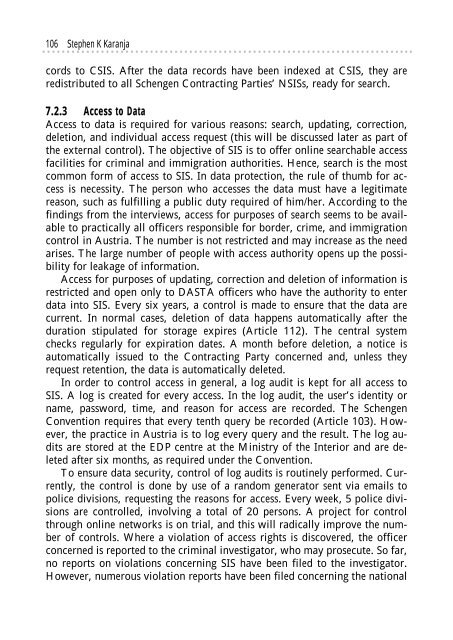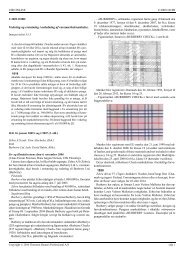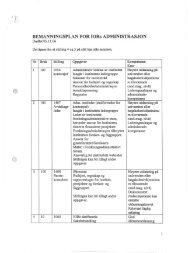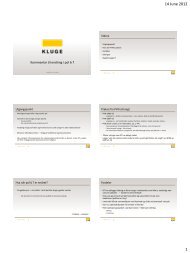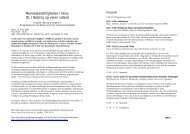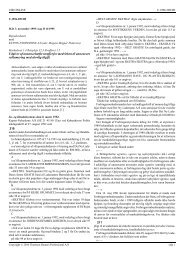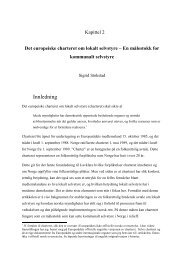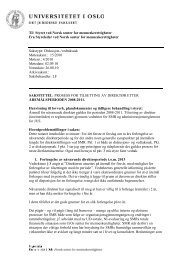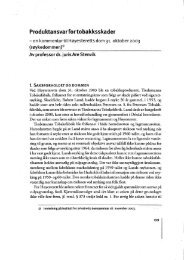Lee A. Bygrave (red.) YULEX 2002 - Universitetet i Oslo
Lee A. Bygrave (red.) YULEX 2002 - Universitetet i Oslo
Lee A. Bygrave (red.) YULEX 2002 - Universitetet i Oslo
You also want an ePaper? Increase the reach of your titles
YUMPU automatically turns print PDFs into web optimized ePapers that Google loves.
............................................................................<br />
106 Stephen K Karanja<br />
cords to CSIS. After the data records have been indexed at CSIS, they are<br />
<strong>red</strong>istributed to all Schengen Contracting Parties’ NSISs, ready for search.<br />
7.2.3 Access to Data<br />
Access to data is requi<strong>red</strong> for various reasons: search, updating, correction,<br />
deletion, and individual access request (this will be discussed later as part of<br />
the external control). The objective of SIS is to offer online searchable access<br />
facilities for criminal and immigration authorities. Hence, search is the most<br />
common form of access to SIS. In data protection, the rule of thumb for access<br />
is necessity. The person who accesses the data must have a legitimate<br />
reason, such as fulfilling a public duty requi<strong>red</strong> of him/her. According to the<br />
findings from the interviews, access for purposes of search seems to be available<br />
to practically all officers responsible for border, crime, and immigration<br />
control in Austria. The number is not restricted and may increase as the need<br />
arises. The large number of people with access authority opens up the possibility<br />
for leakage of information.<br />
Access for purposes of updating, correction and deletion of information is<br />
restricted and open only to DASTA officers who have the authority to enter<br />
data into SIS. Every six years, a control is made to ensure that the data are<br />
current. In normal cases, deletion of data happens automatically after the<br />
duration stipulated for storage expires (Article 112). The central system<br />
checks regularly for expiration dates. A month before deletion, a notice is<br />
automatically issued to the Contracting Party concerned and, unless they<br />
request retention, the data is automatically deleted.<br />
In order to control access in general, a log audit is kept for all access to<br />
SIS. A log is created for every access. In the log audit, the user’s identity or<br />
name, password, time, and reason for access are recorded. The Schengen<br />
Convention requires that every tenth query be recorded (Article 103). However,<br />
the practice in Austria is to log every query and the result. The log audits<br />
are sto<strong>red</strong> at the EDP centre at the Ministry of the Interior and are deleted<br />
after six months, as requi<strong>red</strong> under the Convention.<br />
To ensure data security, control of log audits is routinely performed. Currently,<br />
the control is done by use of a random generator sent via emails to<br />
police divisions, requesting the reasons for access. Every week, 5 police divisions<br />
are controlled, involving a total of 20 persons. A project for control<br />
through online networks is on trial, and this will radically improve the number<br />
of controls. Where a violation of access rights is discove<strong>red</strong>, the officer<br />
concerned is reported to the criminal investigator, who may prosecute. So far,<br />
no reports on violations concerning SIS have been filed to the investigator.<br />
However, numerous violation reports have been filed concerning the national


